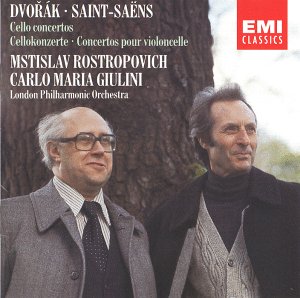 Composer: Edward Elgar
Composer: Edward Elgar
Works: In the South (Alassio), Op. 50; Introduction and Allegro for strings, Op. 47; Sospiri, Op. 70; Variations on an Original Theme, Op. 36, ‘Enigma’
Performers: Vienna Philharmonic Orchestra, John Eliot Gardiner (conductor)
Recording: Recorded in the Grosser Saal, Musikverein, Vienna, October 1998
Label: Deutsche Grammophon 463 265-2
Edward Elgar occupies a distinctive place in the pantheon of British composers, often celebrated for his profound emotional resonance and orchestral color. His works, echoing the grandeur of the late Romantic period, reflect both personal and national sentiments, encapsulated in creations such as the ‘Enigma Variations.’ This recording by John Eliot Gardiner and the Vienna Philharmonic Orchestra presents a selection from Elgar’s oeuvre, offering an intriguing opportunity to explore the interpretative nuances of these familiar pieces through the lens of a conductor known for his revisionist approach.
The disc opens with “In the South (Alassio),” a concert overture that captures the sun-drenched allure of Italy. Gardiner’s interpretation is marked by a vigorous start, with the orchestra’s strings exhibiting a commendable robustness. Yet, as the piece unfolds, one cannot help but sense a certain restraint; particularly in the pivotal ‘nobilmente’ theme, which, while technically proficient, lacks the sweeping passion that has defined more cherished interpretations. Comparatively, the vibrant energy found in recordings by conductors such as Sir Adrian Boult or Sir John Barbirolli imbues the music with a sense of urgency that seems somewhat muted here. Gardiner’s inclination to eschew overt emotionalism in favor of clarity may resonate with some listeners, but it risks underplaying the inherent drama of Elgar’s writing.
In the “Introduction and Allegro,” the Vienna Philharmonic demonstrates exceptional technical prowess, particularly in the ensemble’s cohesiveness during the central fugue. Gardiner’s meticulous attention to detail is evident, yet, again, one feels a lack of an emotional core that could elevate the performance. The final pizzicato, executed with pristine precision, highlights the orchestra’s discipline but perhaps at the expense of the piece’s overall intensity. This refinement can be compared unfavorably to the more impassioned readings by conductors like Barbirolli, who infuse the work with a fervor that is palpably engaging.
“Sospiri,” a poignant piece for strings, harp, and organ, fares somewhat better under Gardiner’s baton. The Vienna strings deliver a rich, sonorous texture that evokes a Brucknerian gravitas, successfully conveying the work’s introspective qualities. This section exemplifies how Gardiner’s stringent interpretative choices can yield profound results, although it remains a departure from the heart-on-sleeve expressiveness found in other recordings, such as those by Richard Hickox.
The disc culminates in the ‘Enigma Variations,’ a cornerstone of Elgar’s output. While Gardiner’s reading is undeniably polished, it tends to present the variations in a somewhat episodic manner, lacking the cumulative tension that builds towards the climactic ‘E.D.U.’ This contrasts sharply with interpretations by conductors like André Previn and Leonard Slatkin, who masterfully navigate the emotional landscape, ensuring ‘Nimrod’ serves as a poignant moment amidst a greater narrative arc. Gardiner’s approach, though precise, may leave seasoned Elgarians yearning for a more immersive experience, where the thematic connections resonate more deeply.
The recorded sound quality is commendable, capturing the orchestra’s tonal richness and dynamic range, although it does not quite match the spatial brilliance of rival recordings, such as those by the London Symphony Orchestra under Monteux. The balance is satisfactory, yet it lacks the vivid clarity that enhances the orchestral textures in other renowned interpretations.
Gardiner’s recording presents a thoughtful, if somewhat restrained, exploration of Elgar’s music. While it may not supplant the beloved interpretations that many listeners have come to cherish, it provides an engaging perspective that can offer newcomers a fresh entry point into Elgar’s world. Ultimately, the recording succeeds in showcasing the Vienna Philharmonic’s technical excellence, but it may not sufficiently illuminate the emotional depths that are the hallmark of Elgar’s genius.



